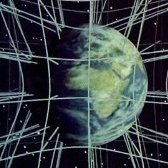Leaderboard
Popular Content
Showing content with the highest reputation on 01/15/20 in all areas
-
There is a common sense rule that disagreeing with someone who has proven himself time and again should be done cautiously.2 points
-
My experience has been that yes, experts tend to correct their own errors when they're realized, and that it requires an expert to correct an expert (even if it's the same person) because expert replies are far more trusted and accepted than others, and that experts tend not to acknowledge errors in other experts' posts. I agree that a good way to disagree is to ask a question (like, aren't the number of photons sent and received the same?) because even when you're wrong, you're not wrong in asking! But too much stuff like "I need time to understand" says you think the problem is with yourself and that there's no reason for the other person to reconsider what they wrote. When other people read that, and compare a reply labelled "Expert" to one that says "I don't understand", it's easy to brush off the latter.1 point
-
I hope you chaps don't mind me not saying anything in replies, but I'm reading your replies and learning new things. All best1 point
-
A) "it's not half" in no way implies it's 100%, or even close B) The second quote is not mine, so it doesn't matter what it says explicitly in terms of my statement. And my position is that at this point, we are beyond litigating this nonsense. At some point you have to stop re-inventing the wheel and move on to bigger things. If you want to have the discussion you need to educate yourself on the basics. I should not have to defend that the earth is a sphere, that astrology is not a real effect, or that AGW is the scientific consensus. We reach a point where the evidence is vast, and if you disagree, the burden of proof is on you to show it. And if you are unaware, it's up to you to fill the ignorance hole. There's plenty of discussion on the subject. No, it's a fact based on what I have seen. If there were a legitimate alternative scientific explanation, we would be seeing scientific discussion exploring it. It's not there. Instead what we get is what happened earlier in this thread: "there's a guy who has good arguments against AGW" "What are the arguments?" <crickets> Well, no.1 point
-
Here are some links that may help. The first is about the department of Microtechnology and Nanoscience at one specific university. You may be able to find for instance what is in scope for "nano" vs micro technology and links to papers and scientific initiatives in this area. https://www.chalmers.se/en/departments/mc2/Pages/default.aspx Here is a random selection of recent research topics and projects: -Graphene reinforced composite for asphalt pavements -Modelling charge and heat transport in 2D-materials based composites -2D material-based sensors -2D material-based spintronics -Graphene-based THz devices There is also a programme for nanotehcnology. This link may provide some information about possible career paths, research areas, courses and scope compared to other areas. https://www.chalmers.se/en/education/programmes/masters-info/Pages/Nanotechnology.aspx1 point
-
It should be noted here also that in curved space-times, conservation of energy-momentum is a purely local conservation law; it does not necessarily apply globally across regions of non-Minkowski geometry, unless the spacetime in question has the specific symmetries that give rise to such conservation laws.1 point
-
Digest it? You mean the answer given was wrong and you're pretty sure of that? Is there some unwritten rule on this site that it's poor etiquette to disagree with a resident expert? If people ask questions and see a wrong answer from a resident expert, and no one authoritative corrects it, they tend to trust the wrong answer. 1. They don't, which you know. 2. That's right. 3. I don't know, hopefully someone else does. Photons have kinetic energy, which is different in different frames. There's no conservation of an object's energy between different frames. Where conservation of energy comes in is... in either frame, the galaxy loses the energy of each photon that leaves (ie. different in the 2 frames), and I guess is pushed in the opposite direction of each photon a tiny amount (different in each frame). The red-shift also lowers the intensity of the light (or the number of photons received per your second), so the energy you receive is less than 100 joules (I think you receive 100/n^2 watts for n seconds, 100/n joules total?).1 point
-
I don't think any university offers a Bachelor degree in 'nanoscience'. You may be able to specialize in one of the nanosciences after completing a BSc in Physics/Chemistry/Biology or Mech/Chem/Elect Engineering. Nanoscience is just a blanket term for regular science, but ,on an extremely smaller scale.1 point
-
Semiconductor manufacturing comes to mind. You might get into medicine and use of nanobots to deliver targeted treatments. I imagine there are some cool things being researched by DAROA and projects at the MIT Design Lab so maybe check there.1 point
-
I should add to "nobody will see it". Actually ATC will see it, just not under any assigned code. When they assign the code, the aircraft returns the assigned code for ID purposes as well as carrier/flight number/course/alt/speed info (from radar). This where incorrect codes or inoperative transponders on civil airlines can get into trouble. You have to go out of your way to change the settings, because the moment a pilot confirms a squawk code, ATC requests affirmation of the position as they see it on radar before completing a flight following. Let's say the pilot turned off the transponder. I'm not sure you can actually do that on a modern jetliner. I'm pretty sure it comes on with the flight computer as opposed to a separate unit in the radio stack of a small plane. Okay, perhaps it failed to transmit kind of scenario. ATC would still see the plane as a blip, but no ID parameters. They'd likely already know the ID and ask accordingly for a failure or incorrect setting. I suppose, if the 737 transponder operated correctly through the after takeoff checklist then failed shortly thereafter, they could have inadvertently deceived the SAM site. If there were flaws or errors in that system, heaven forbid... Interesting thought. I'm going to run this scenario on the flight sim. When departures transitions me to flight center, I'll shut down or otherwise alter the squawk code (to anything other than 1200) We'll see what center has to say about that?1 point
-
ATC assigns a squawk code then tracks the aircraft using that code. It's pointless to merely enter an unassigned code because no one will see it. And different modes means a different frequency and signal parameters as to be distinct from each other.1 point
-
We Brits don't like the Monarchy (well , 'lisabeth is a class act) Would you have room for any more boarders?1 point
-
Look at the articles on the topic. Look at the organizations who study this and have openly stated their agreement. This isn’t exactly as loose as you’re suggesting, nor is it in question any longer to anyone approaching the discussion in an intellectually honest manner. https://climate.nasa.gov/scientific-consensus/1 point
-
I do. I think he is the most genuine and balanced candidate in the race. It also helps that most of his ideas align fairly well with mine, as I've been pro UBI since the recession of the early eighties, and was in favour of Canada's VAT (our GST-Goods and Services Tax) when it was introduced to replace the hidden Manufacturers wholesale level tax that was in place back in 1991 (I was definitely in the minority on this...and subsequent governments got in promising to repeal it...but it's still here...guess what...we have to pay our bills somehow). I do think the $1,000 a month (Yang's "Freedom Dividend") is a fair bit higher than I would advocate, but in principle I think it is right, and economically workable, for reasons right across the "Right/Left" spectrum if done correctly...and I think Yang could do it. It might be tough to implement but nothing in comparison to the suggestions of Warren and Sanders. (Sanders is at least honest about his socialist approach, but seems not to understand the benefits of free enterprise and capitalism...which need to be properly harnessed for everyone's benefit...not killed) Warren has incredible energy but I find her more than a little disingenuous...apparently by recent polls others have as well...which is a shame as I think she would be a capable POTUS. I think Biden's platform is solid except I don't think he is up to the task. I hope he picks a good VP if he wins the nomination. I didn't like Butigieg's comments blaming Trump for the Iranians shooting down of Ukraine Flight 752, but I think he is capable and his platform reasonable. Same for Klobuchar, who I think won the last debate. I probably like Tulsi Gabbard second to Yang. She is another rare one that is willing to address people right across the political spectrum and avoid the identity politics. (which was the downfall of Booker...and with Harris...Harris also struggling with honesty)1 point
-
Nowhere. Assume someone shines a laser off a set frequency of x mhz, as measured by him and he shines it for 1 second by his clock. By his measurement, he is sending at 100 watts, so in the one second he transmits 100 joules of energy. He is moving away from you at some fraction of c so that you see the laser red-shift by a factor of n, so that you measure the frequency of the laser as being 1/n what he measures it to be this means you also measure the beam to be 1/n of 100 watts. However, the red-shift doesn't just effect the frequency, but also how long you measure the laser beam from start to end. From the moment you first detect the beam to when the end reaches you, you will measure n seconds. SO While the source says transmitted at 100 watts for 1 second, you receive the beam for n seconds at 1/n sec. You both say that the beam contained a total of 100 watts of energy.1 point
-
Australia's National Parks and Forestry and community Fire authorities use controlled burning and have never been prevented by "green regulation" from using it. Leading fire experts and former and current heads of fire authorities reject the claims that green regulation preventing burning off is to blame. Blaming environmentalists is a nasty political claim that has no actual substance. The forestry industry has long been antagonistic to those calling for forest protection and regulation that limits their access to State owned forest resources - hating greenies comes with the job. But I think conservative right politics has become especially antagonistic and inflaming those hatreds because those are the loudest voices on climate change, the message is cutting through and that issue is gaining popular support. Australian Greens have no policies that prevent hazard reduction burning - tending more towards promoting indigenous practices of controlled burning. They have never had enough representation to force policies on this. Livestock have been excluded from National Parks because their purpose is for native flora and fauna, not private grazing (a privilege widely abused when and where it was or is permitted); lots of Australians who are not "greenies" fully support that purpose. Reduced opportunities for burning off are more to blame for inadequate hazard reduction burning, as well as poor resourcing of National Park and Forestry management, that have to have teams and equipment on the ground to do it. Record and near record warm winters are making what was previously a relatively predictable and relatively safe activity - hazard reduction burning - unpredictable and dangerous. Fire authorities have always had all the authority needed, to conduct burning off but they also have authority to call a halt to burning off when conditions are making it too dangerous.They decide, not The Australian Greens. My own observation and speculation is that one of the crucial things that is changing with climate change warmer winters is lack of dew; my own observation was that previously, winter burning was often self limiting because cool conditions caused dew to form late in the night or early morning. Fires were lit in the previous afternoon or evening with a reasonable expectation they would go out. With warmer conditions there can be no such expectation; these activities are requiring ever greater vigilance, more people on the ground and more equipment. Around here - in the middle of recent fires - the last few winters would have allowed no more than 1 month of opportunity to fires to burn slowly with low likelihood of escaping containment. That is actually too short a time for large areas with high fuel loads; six weeks can be considered the minimum for a fire to burn out sufficiently to be declared "out" and slow burning trees and tree roots can still restart fires for longer periods than that. When I consider warming of 3C (at best I think) and possibly more than 5C (with the minimum levels of climate action that would be welcomed by Australia's current government) - it is properly terrifying.1 point
-
That is not the definition I would use, since the possible paths connecting events depend on initial and boundary conditions as well (specifically - whether your test particle starts off at rest, or has initial momentum). It is better to say that the principle implies that any free-fall path connecting two given events must be a geodesic of spacetime. In singly-connected spacetimes, this choice is unique, since for a given set of appropriate boundary conditions, the geodesic equation has precisely one unique solution. Technically you could have spacetimes the topology of which is multiply-connected; in those cases you can then have more than one geodesic connecting the same two events. I don’t know though if it would be possible to have more than one geodesic of the same length connecting the same events. That is an interesting question, but I’d have to think about that first before attempting an answer. I certainly couldn’t think of a physically realisable example right now. Well, the technical definition is that you start with the integral I quoted earlier, hold the start and end points as fixed, and then vary the paths between these points. The principle simply states that the path physically taken is the one that is an extremum of this proper time functional, i.e. the longest one. Note that the principle of extremal ageing is a specific example of a more fundamental principle, the principle of least action. That is the fundamental principle that underlies all field theory frameworks, specifically quantum field theory, and hence the Standard Model. Also GR itself follows from it - applying the principle of least action to the Einstein-Hilbert action gives you the Einstein field equations.1 point
-
Photolithography for modern ICs is currently starting production at 7 nm. ( the 1st 16 bit processor had 3um ( 3000 nm ) design rules/features ) And I'm sure they are working on ramping up yields at 5 nanometers. That provides for billions of transistors on a single die. I believe the 1st 16 bit processor, the Intel 8086, had about 29,000 transistors, while the 8 core Intel I9-9900k has over 3 billion. What other nanotech did you want to discuss ?1 point
-
Please define what you mean by "scopes". It can mean the entire area that is dealt with by the subject (which would be quite difficult to list here as part of a discussion ), and it can mean opportunities to deal with the subject (which again is quite a large amount of things). It always helps to be specific when starting a discussion so everybody knows what you want to talk about.1 point
-
1 point
-
The nano-scale. You'll likely need to make your question a nano-more precise in order to receive an answer that’s a nano-more helpful.1 point
-
Far better. The Maxwell well equations for the E and B fields. Electro is former, magnetism for latter. Have the 90 degree polarization shift in the GIF on that link. Learn the Maxwell equations first. In order to do that you will need to study the vector properties of gradient, divergences and curl. Those you will need to understand polarizations of the EM field. Pay particular under math of when the dot product or cross product of two field vectors apply. I recommend Griffiths "Introductory to Electrodynamics" if you can get a hold of it. Symbolism is as follows use two vectors (actual letters don't matter) pay attention to the Operator ) [math] A\cdot B [/math] now if you deal with the inner product of two vectors you return a scalar. (Yes I know I am going too far but I want to give you direction of study) you also have outer products of two vectors. [math] A×B [/math] for cross product. One is linear the latter is perpendicular. (Hint ) Now one thing to take the above further. The Cosmological constant has no polarizations. However one can treat gravity vs the Cosmological constant under dipole treatments without repulsive charge. If one treats the two under vector direction. So you wouldn't use Colombia force laws under that examination. You would apply pressure via the equations of state. [math] w=\frac{\rho}{p}[/math] under GR pressure is vector direction in the i direction. Ie [math]T_{ijk}[/math] T for arbitrary tensor. (See Euler angles) fir subscript. Now to give an example of why I mentioned all the above. Lets look at a common Cosmology application. Lets describe spacetime under the Minkowskii limit. The Minkowskii tensor is an orthogonal group that follows the following vector relations between [math]\mu\cdot\nu=\nu\cdot\mu[/math] this relation tells us that the inner dot (linear hint) product of the vectors [math]\mu [/math] and [math]\nu [/math] are symmetric and hermitean/orthogonal. With the EM fields you will not find the above to be the same case. (You will be dealing with the cross product ) which is antisymmetric. PS you will find the above relevant to the differences between two 90 degree phase shifted fields and fields that are not phase shifted in terms of the attempts you are making in a charged application of Lambda vs gravity. Ie one situation is symmetric while the other is not. ie [math]E×B[/math] vs [math]\Lambda\cdot g[/math] g for gravitational potential at an arbitrary coordinate.1 point
-
Are saying a photon from the sun does not travel to earth? Is this a semantic thing around definitions of terms?0 points
-
If you can give me an EXPLANATION to what a photon is, NOT a DEFINITION.. then I'll gladly answer your question.😀-1 points















